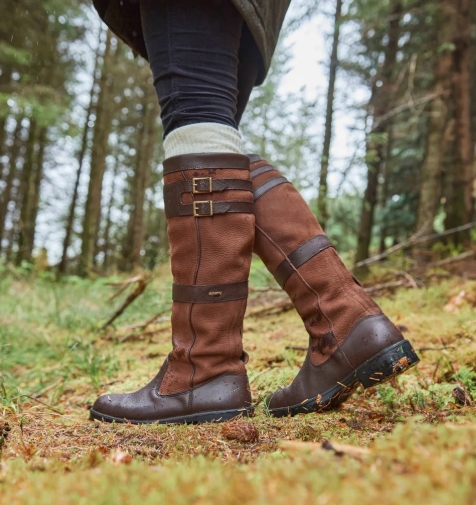As someone who spends most of my days kneeling in moss, brushing soil from roots, and cataloging rare ferns, I’ve learned that the tools and clothing I wear are as important as my field notes. Hours of observation often mean trudging through wet meadows, climbing uneven hillsides, or pacing riverbanks in the early morning dew. In those environments, the gear on my feet decides whether my focus stays on the plants or on the discomfort creeping up my legs. It was through years of trial and error that I came to appreciate the design and craftsmanship of dubarry boots uk.
What struck me first was their resilience in damp landscapes. Many plant surveys I conduct happen during spring, when the earth is saturated with rain and rivers spill over into surrounding fields. Ordinary shoes collapse after just a few outings, but Dubarry seems to have studied the relationship between water and terrain as closely as I study vegetation. Their leather, treated to repel moisture while allowing breathability, means I can kneel to inspect a cluster of marsh marigolds without thinking twice about soggy socks or chilled feet.
Beyond function, there is something deeply aesthetic about the boots. Working with plants daily, I’ve grown sensitive to texture and tone—how the green of a lichen differs subtly from the green of ivy, or how bark carries patterns of age. The grain of Dubarry’s leather has that same natural authenticity. When sunlight hits it, it doesn’t shine artificially; instead, it resembles the weathered strength of tree bark after a storm. That quiet beauty blends seamlessly into the landscapes I walk, making me feel less like an intruder and more like a participant in the environment.
Comfort, of course, is an unspoken requirement in my profession. A full survey day can mean ten to twelve hours outdoors, navigating everything from thistle-filled pastures to stony woodland floors. I’ve worn boots that left blisters so raw that crouching to examine a seedling became an exercise in endurance rather than discovery. Dubarry’s design, with its supportive soles and balanced weight, feels almost like a conversation between the foot and the ground. Instead of fighting against the terrain, the stride adapts naturally, leaving me free to focus on the small miracle of a violet blooming from a crevice or the delicate spore pattern of a fern.
There was one particular field day that cemented my affection. I was guiding a group of students through an old oak woodland, teaching them how to distinguish edible wild garlic from poisonous lookalikes. The ground was uneven, slippery with rain from the night before, and I remember several of them struggling to keep their footing. I led them down a slope, my steps sure and steady, and one student later remarked how it seemed as though I had walked that path countless times. In truth, it was only my third visit, but the confidence came from trusting my boots. That sense of security allowed me to keep my attention on teaching rather than on calculating every step.
When I return home after long days in the field, there is a quiet ritual in brushing away the mud and drying the leather. It feels similar to pressing plants for preservation—care for the tools that enable discovery. Over time, the boots don’t lose their charm; they gain it. The scuffs and marks become records of where I’ve been: the moorland ridge where I first spotted cloudberry, the riverbank where a rare orchid bloomed, the windswept cliff that tested both balance and courage. Each trace is a reminder that exploration and endurance are intertwined, just as the study of wild plants is inseparable from the landscapes that host them.
Dubarry, to me, is not just a brand. It is a companion in my encounters with nature, one that understands the unpredictability of weather, the roughness of terrain, and the quiet joy of standing still among wildflowers. And perhaps that is why I carry such appreciation for these boots—they have become as much a part of my work as the hand lens I keep in my pocket or the notebook filled with sketches of leaves and stems.
